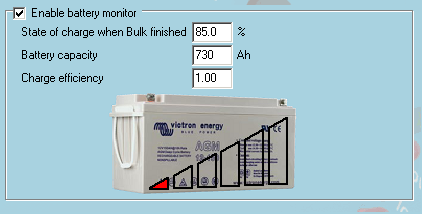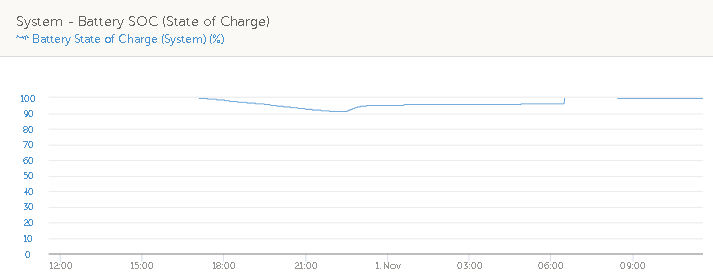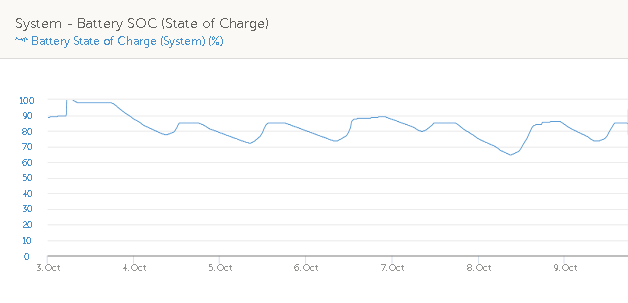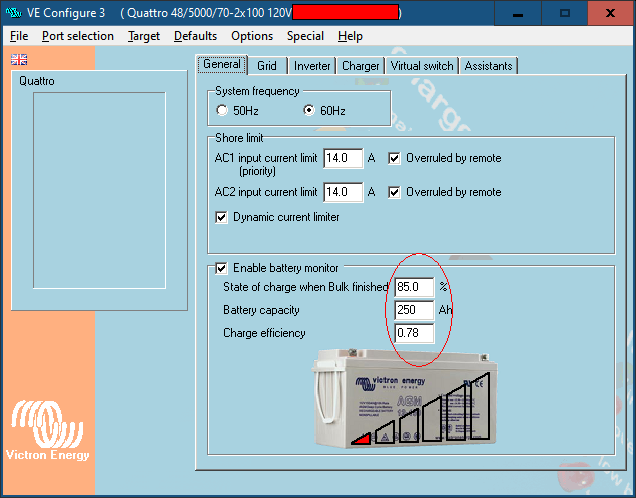Hi,
Till now I dind't quite succeed in having the SOC showing in console (what I think should be) correct measurements. My system has a Multi 3000/24/70-16 and 2 solar chargers, VenusGx. The discharge seems linear, from 100% going down... but the charge seems to stall and I only get to 100% after a on grid charge by the multi, and only after full absorption period.... makes a big leap from whatever stalled value it has to the 100%. In solar not even this.
So, I suspect I have incorrect values somewhere, for example in the VE Config battery monitor section:

My batteries are 730Ah, but this is the C100 value (they are OPzS). What should we use? C10 instead?
Efficiency - is this to take into account the losses on cables? Could it explain the SOC never reaching to 100% in solar?
State of charge when bulk finished, left it on default...
Since my SOC monitoring has not being very reliable, I can't use it as trigger for other functions, which I would like to do... any help appreciated.




